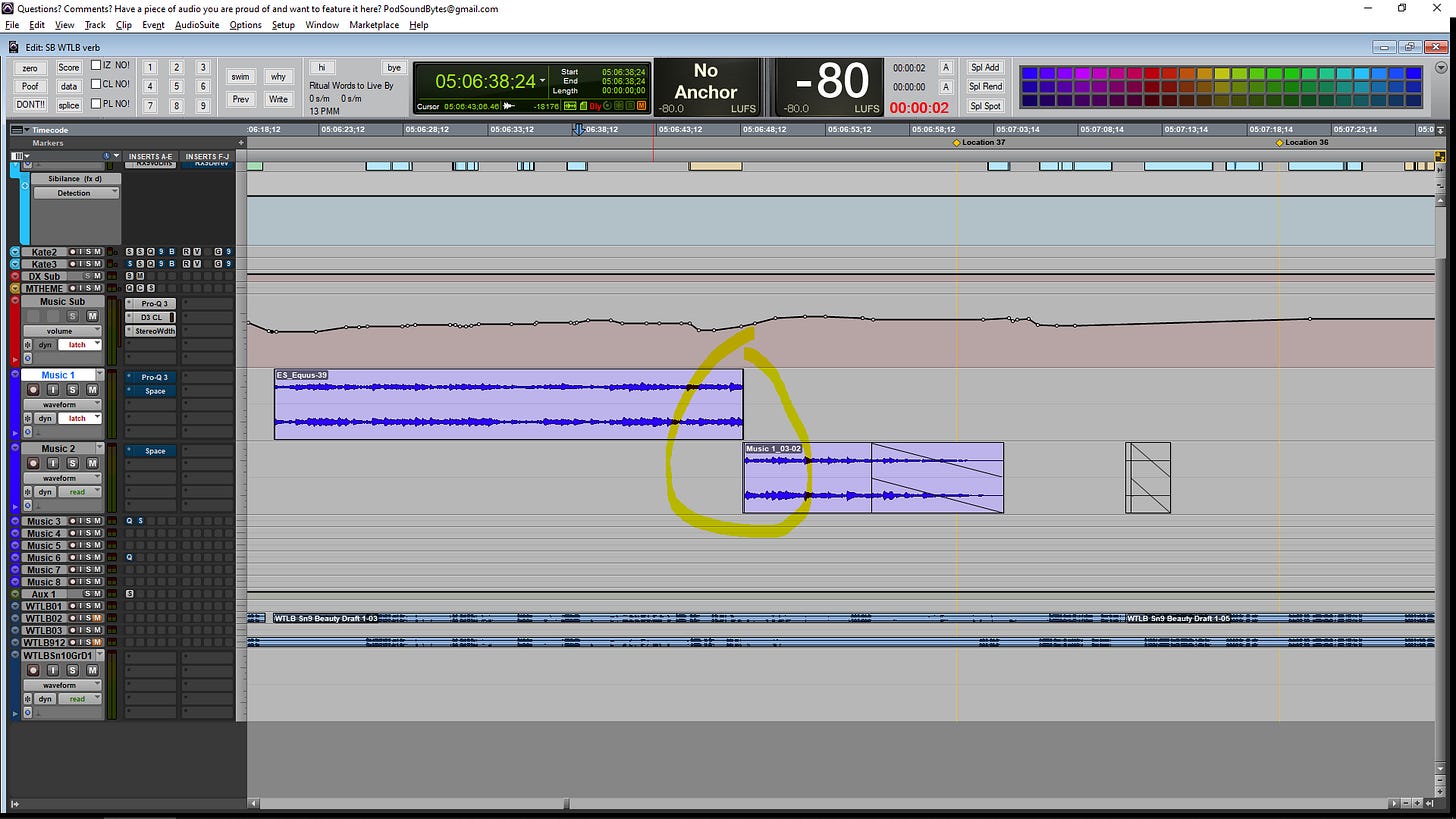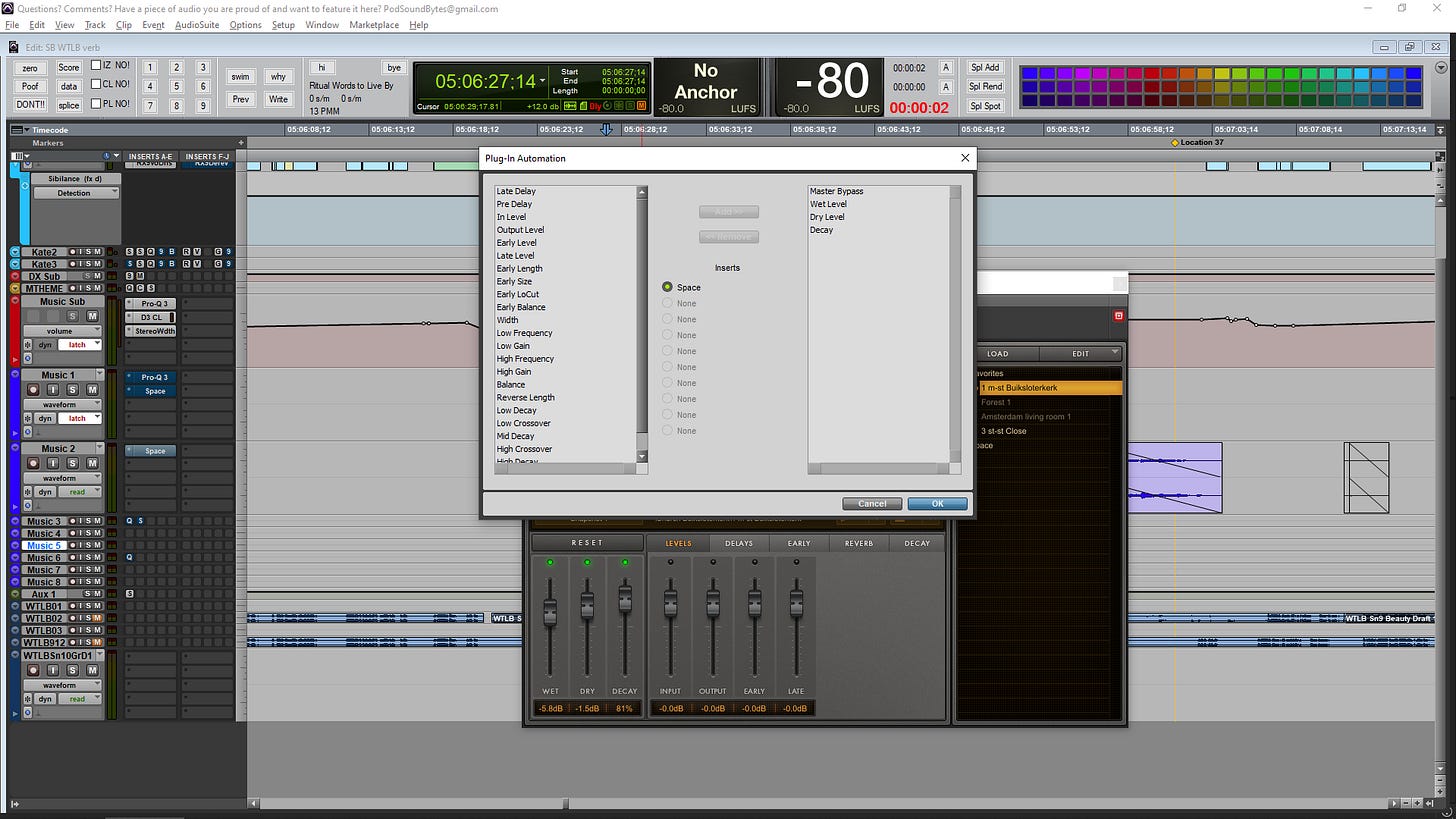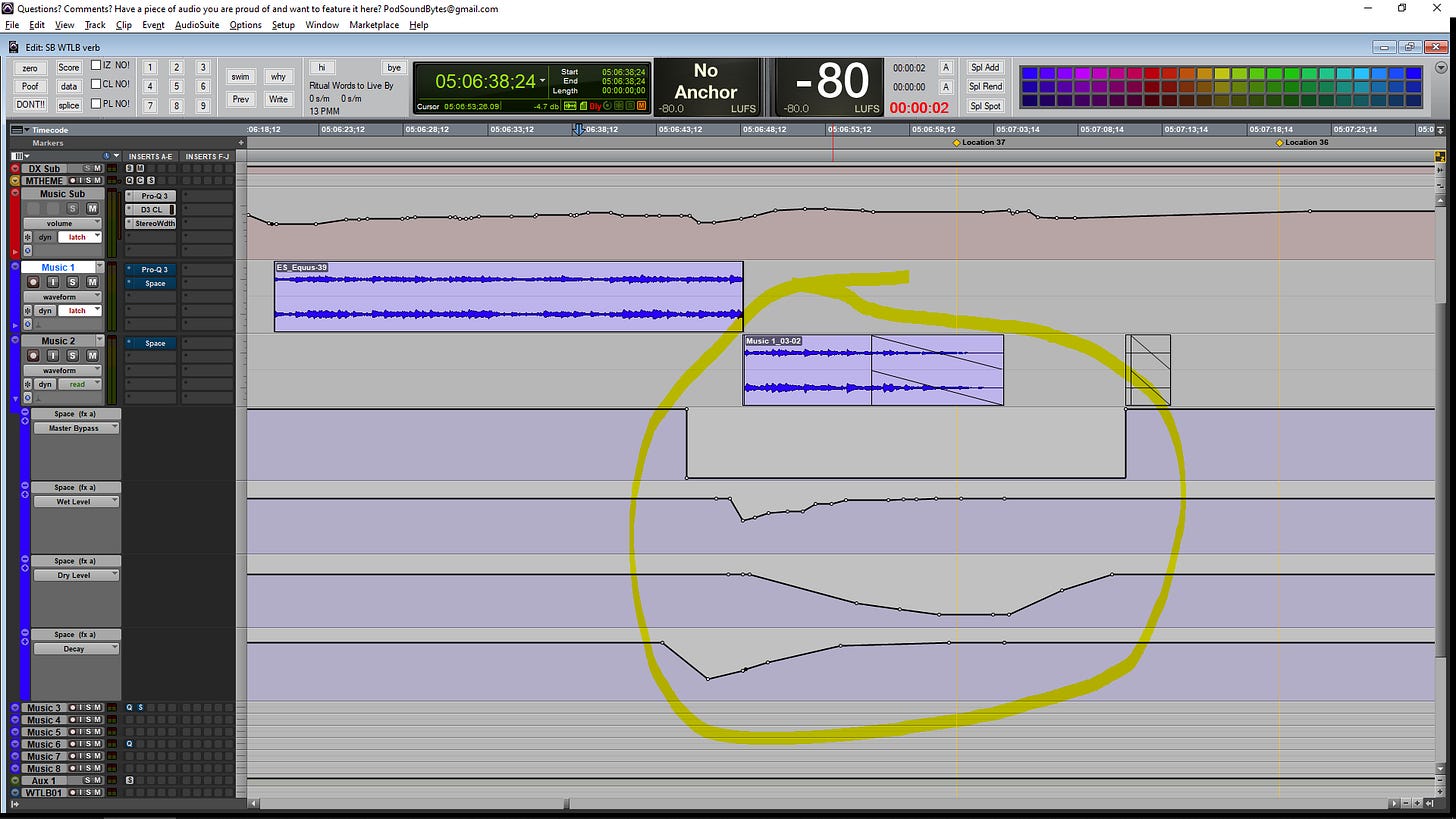Hello, and welcome back to Sound Bytes!
Today, I’m covering a technique for automating reverb to create the sense of growing distance in a song. And if that doesn’t make sense, stick around!
The effect today is subtle, and the average listener might not even notice it consciously, but they’ll feel its emotional impact. The sound byte today comes from the Ritual app, a client that comes through the door every so often with these brief mental wellness, spiritual, and meditative sessions.
If you’re like me and looking for something to calm your nerves right now, this app might be perfect for you. I was QCing my work on a series called Staying Human yesterday and ended up listening to a few episodes after succumbing to the meditations. Even though I was familiar with the material, I still felt so relaxed and at ease afterward. Or you might want to try the series Words to Live By, which is where today’s sound byte comes from.
Before listening, I wanted to give a quick trigger warning. This sound byte includes dialogue that analogizes the loss of a loved one. So if you aren’t in the right frame of mind for that, I think you might want to consider this before proceeding.
Today’s Sound Byte
Video Breakdown
TL;DR
To create the effect of growing distance with reverb, automate the reverb plugin by gradually increasing the wet level (reverb) and decay (room size) while decreasing the dry level (direct signal). In music, this simulates the feeling of something fading away, which can add emotional weight—perfect for conveying distance, loss, or detachment.
Breakdown Buffet
Just a beautiful piece of writing from the host, Kate Bowler, who crushes the delivery. It’s just dripping with emotion and sincerity in that read.
With the music, I wanted something that matched the beauty, softness, and delicateness of a flower, and I think this solo piano was perfect. Sometimes you just need something simple and clean, and this, to me, was exactly it.
Before getting into the reverb effect, I also wanted to touch on dialogue pacing. I’ve learned a lot about pacing from these productions, and they have given me the courage to let other productions breathe more. We live in a world where everything is punchy and snappy, but I posit that there are people out there that want material that doesn’t treat the listener like a competitive eater at an all-you-can-eat media buffet. Everything I work on outside of Ritual is generally snappy and always moving but this is the type of show that actually requires dialogue that breathes.
You hear the effect on the music after Kate’s final line (1:01), “The beauty of a flower is that it fades,” which sounds like the piano was growing more and more distant over time, and that was meant to convey the distance someone might feel with the loss of a loved one. Which is, of course, what the flower is an analogy for.
After Kate’s last line, I let the piano play dry for just a moment, to convey the flower’s last glimmer before starting that fade into the distance.
With the reverb effect, I aimed to evoke a sense of the flower wilting, fading, and moving away in space. If I close my eyes, I can almost see it. This can be especially powerful for a listener reflecting on the loss of a loved one. Hitting that key demographic of, well, all of us.
Automating reverb like this is commonly used in TV and film (alongside EQ) to simulate a person moving away from the viewer’s perspective. It’s achieved by gradually lowering the direct signal of their voice while increasing the reverb.
Here’s a simple way to think about the effect: when I speak close to a microphone, my voice sounds clear, rich and full. You can hear resonance and bass. If I move away, the mic picks up more of the room and less of the direct, dry vocal sound. You also lose the bass, which is why, in a film, you will hear the low end of someone’s voice fade as they walk away.
How to Automate Reverb
Here’s how I set it up:
Split the Track: I break out the section where the reverb will be applied. Turning a plugin on and off mid-track can cause pops, so this avoids that issue.
Enable Plugin Automation: Open the plugin’s automation window and add these parameters:
Master Bypass: Turns the reverb on/off.
Wet Level: Controls how much reverb is applied.
Dry Level: Controls how much dry signal is heard.
Decay: Increases the size of the imaginary room.
Draw Automation Lines: Open the automation lanes, add automation points, and adjust them to taste. For instance:
The wet level increases gradually, adding more reverb over time.
The dry level fades out, making the sound feel distant.
The decay grows, making the reverb’s space larger.
The process is straightforward once you get the hang of it. And trust me—learning to automate plugins will transform your audio game.
I can think of a couple of other applications for this technique, so here is one more:
You could use this technique if you wanted to convey that someone was droning on about something ad nauseam that nobody cared about—like, say, if a disgruntled sound guy was going on about…
I want to play one last clip from Words to Live By before wrapping up.
This clip comes shortly after the flower bit in the same episode of Words to Live By. Another TW: this next section deals more explicitly with the loss of a loved one, connecting the earlier flower analogy to a real person named Anne, who was grieving the loss of a friend. So again, please consider this if you aren’t in the right headspace for this.
To help bridge the connection of Anne’s dying friend and the flower, I used the same song. After you listen to the clip, I want you to think about this: Did doing that reverb effect earlier make this song land a bit harder here? I feel like it would land beautifully either way, but if the flower analogy resonated, the drifting reverb on the song might have given the music extra emotional weight going forward.
The listener might have already been thinking about their lost loved one moving away from them, thus giving the song in this section extra meaning. OK, you decide if I’m overthinking this or if this song slaps super hard now in this clip. I suggest closing your eyes when listening to this, tune everything out and just feel the audio.
Thank you for reading and listening! If you’re enjoying these newsletters, please share it! And as always, feel free to reach out with any questions or comments on Substack, LinkedIn, or at podsoundbytes@gmail.com.




